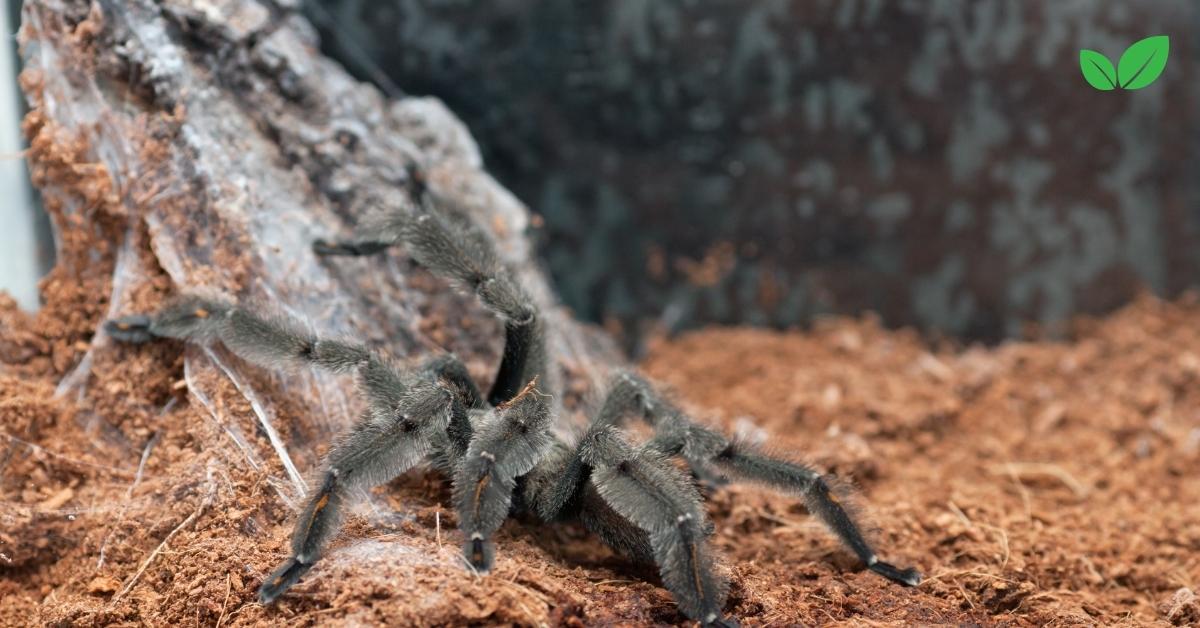Introduction
Psalmopoeus irminia, commonly known as the Venezuelan Suntiger Tarantula, is a captivating species of arboreal tarantula endemic to the tropical forests of Venezuela and surrounding regions. Recognized for its striking black body with vivid orange chevrons on its legs, P. irminia has earned a place of admiration among arachnid enthusiasts. However, beyond its aesthetic appeal, this tarantula plays a significant role in its ecosystem. Understanding its environmental niche sheds light on its behavioral adaptations, dietary habits, ecological role, and the conservation challenges it faces.
This article provides a comprehensive exploration of Psalmopoeus irminia‘s niche within its native habitat, highlighting its adaptations, interactions within the ecosystem, and the importance of preserving its environment.
Habitat and Distribution
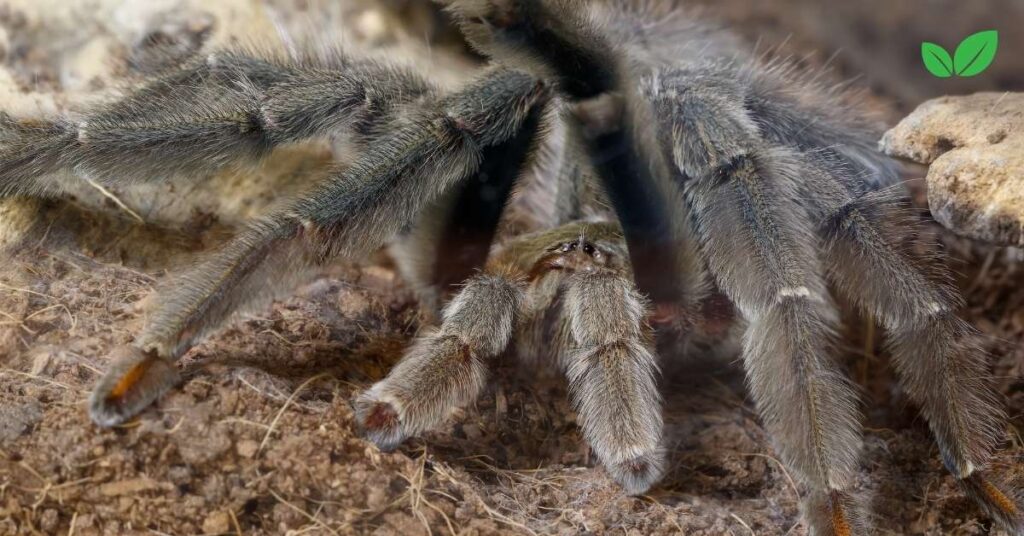
Native Range and Preferred Habitat
Psalmopoeus irminia is native to the tropical rainforests of Venezuela, with its range extending into neighboring countries with similar forested environments. These tarantulas thrive in regions with high humidity, dense foliage, and ample tree cover, which provide the perfect setting for their arboreal lifestyle. The tropical climate in these regions typically includes warm temperatures ranging from 75°F to 85°F (24°C to 29°C) and humidity levels often exceeding 70%.
The forest canopy is essential for P. irminia, as it offers natural hiding spots in tree hollows, under loose bark, and within dense vegetation. These shelters not only provide protection from predators but also serve as strategic locations for ambush hunting. Their ability to adapt to different types of trees and vegetation underscores their resilience and versatility within their environmental niche.
Microhabitat Preferences
Within the forest, Psalmopoeus irminia shows a preference for microhabitats that are rich in natural cover. The use of silk to create retreats is a notable adaptation that supports its arboreal existence. These silk-lined nests help maintain necessary humidity levels, provide shelter, and aid in temperature regulation, crucial for survival in varying climatic conditions.
Physical and Behavioral Adaptations
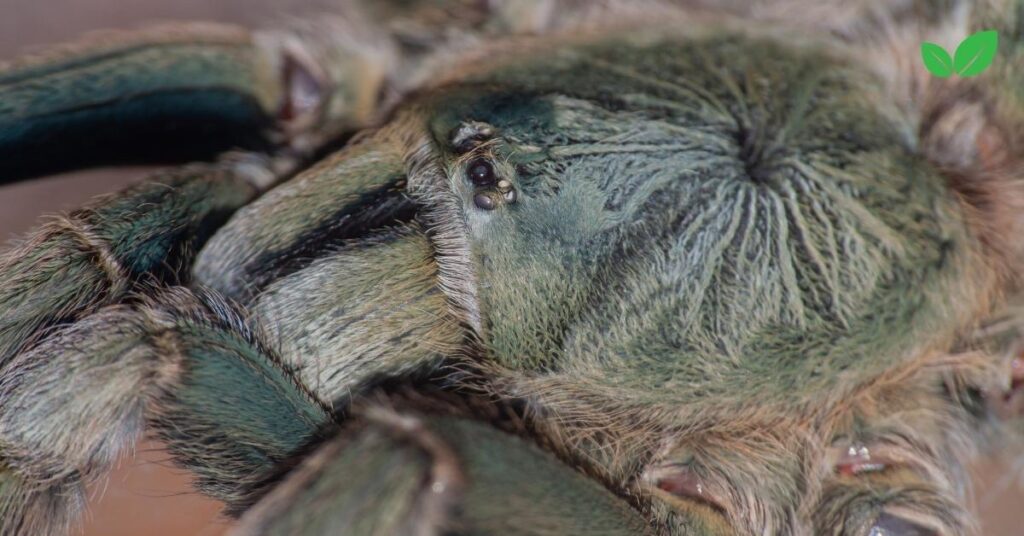
Morphological Characteristics
Psalmopoeus irminia stands out due to its distinctive coloration and body structure. The tarantula’s dark, velvety body serves as a form of camouflage, blending seamlessly with the shadowed environments of the forest canopy. The bright orange chevrons on its legs not only create a visually striking contrast but may also act as a warning signal to potential predators.
Its robust legs, lined with fine setae (hair-like structures), are adapted for climbing and gripping tree bark with ease. These setae also serve as sensory organs, allowing the tarantula to detect vibrations and movements in its surroundings. Unlike some other New World tarantulas, P. irminia does not have urticating hairs, relying instead on its speed and agility to evade threats.
Behavioral Traits
Psalmopoeus irminia exhibits highly defensive behavior when threatened. It is known for its impressive speed and readiness to retreat to its silk nest when sensing danger. If escape is not an option, this tarantula will exhibit a defensive posture, raising its front legs to display its fangs as a warning.
This species is primarily nocturnal, hunting under the cover of darkness when it is less vulnerable to predation. Its nocturnal habits align with the activity patterns of many prey species, optimizing its hunting efficiency. The tarantula’s arboreal adaptations allow it to ambush prey with remarkable speed and precision, traits that are vital for survival in the competitive environment of the tropical rainforest.
Diet and Hunting Strategies
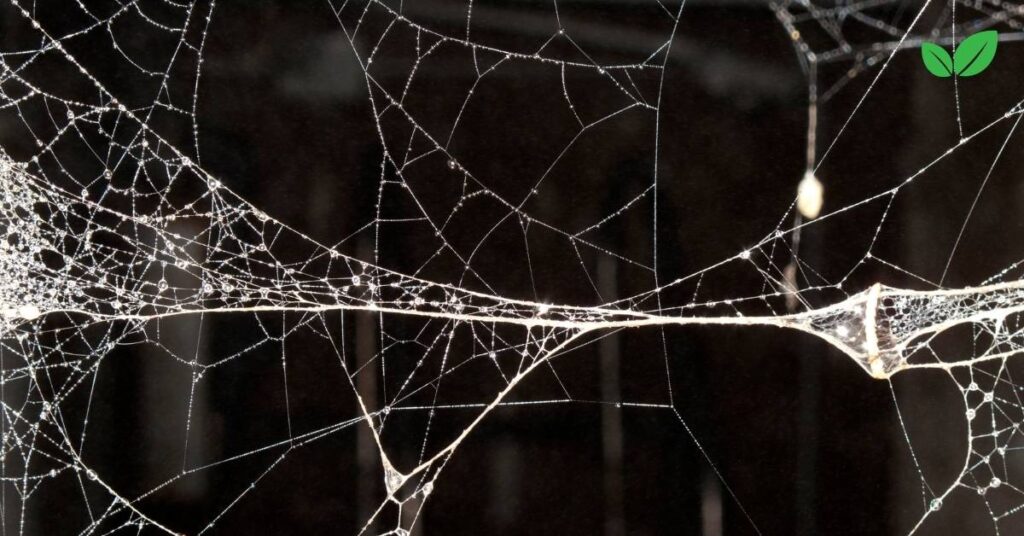
Prey Preferences
Psalmopoeus irminia is an opportunistic predator that primarily feeds on a variety of insects and small invertebrates. Its diet includes crickets, grasshoppers, beetles, and moths, as well as small vertebrates like lizards and tree frogs when available. This broad dietary range allows P. irminia to adapt to seasonal variations in prey availability, making it an effective and resilient hunter.
In captivity, P. irminia is typically fed crickets, roaches, and mealworms. These prey items mimic its natural diet and provide the necessary nutrients for growth and health. In the wild, its predatory role helps regulate populations of other invertebrates, contributing to the ecological balance within its habitat.
Hunting Mechanisms
As an ambush predator, Psalmopoeus irminia relies on stealth and speed to capture its prey. It often positions itself at the entrance of its silk retreat, waiting for vibrations that signal the presence of potential prey. When prey is detected, the tarantula lunges with astonishing speed, immobilizing it with a bite.
The venom of P. irminia contains enzymes that begin the process of external digestion, liquefying the internal tissues of the prey. This method allows the tarantula to consume its prey efficiently, maximizing nutrient absorption. The quick capture and consumption of prey minimize the time spent exposed to potential predators.
Reproduction and Life Cycle
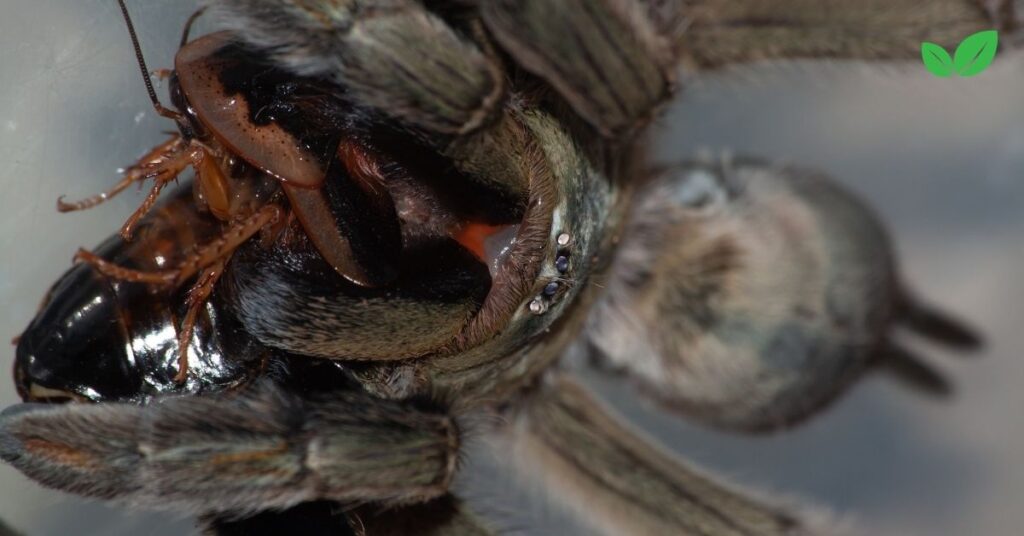
Mating Behavior
Mating among Psalmopoeus irminia typically occurs during the wetter months, which align with increased prey availability and optimal environmental conditions. Males reach maturity at around 2 to 3 years of age and will actively seek out females by following pheromone trails.
Courtship involves a series of tapping signals from the male to alert the female of his presence. This behavior reduces the risk of being mistaken for prey and attacked. If the female is receptive, she will allow the male to approach and deposit sperm using his pedipalps. Post-mating cannibalism is relatively rare in this species but can occur, especially if the female is not well-fed.
Egg Sac and Spiderling Development
Female P. irminia lays an egg sac that can contain anywhere from 50 to 150 eggs, which she guards fiercely within her silk retreat. The eggs hatch after approximately 6 to 8 weeks, depending on temperature and humidity. The spiderlings remain with the mother for a short time before dispersing to establish their own territories within the canopy.
Spiderlings undergo several molts as they grow, shedding their exoskeletons to accommodate their increasing size. Each molt is a vulnerable period, during which the young tarantulas are at greater risk of predation and environmental stress.
Ecological Interactions and Role in the Ecosystem
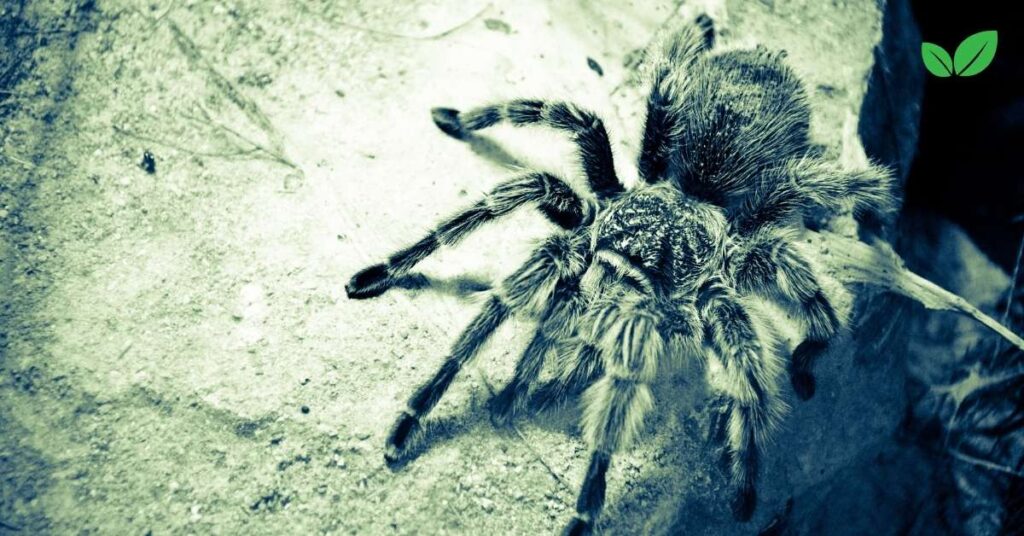
Predators and Natural Threats
Despite its formidable defenses, Psalmopoeus irminia has natural predators, including birds, larger reptiles, and some mammals. These predators contribute to the natural regulation of tarantula populations, maintaining balance within the ecosystem.
In response to predation pressures, P. irminia employs its speed and use of silk retreats for protection. The tarantula’s dark coloration helps it blend into the tree bark and shadowed forest understory, reducing the likelihood of detection.
Ecological Contributions
Psalmopoeus irminia plays a vital role in its ecosystem by controlling insect and small invertebrate populations. This predatory activity helps prevent the overpopulation of certain species that could otherwise disrupt the ecological balance. In turn, the tarantula serves as prey for higher trophic-level predators, contributing to the food web and supporting biodiversity.
The silk structures built by P. irminia provide microhabitats for other small invertebrates, fostering a unique ecological niche within the forest canopy. These retreats contribute to the overall complexity and health of the forest ecosystem by creating small-scale habitats that support diverse life forms.
Conservation Status and Challenges
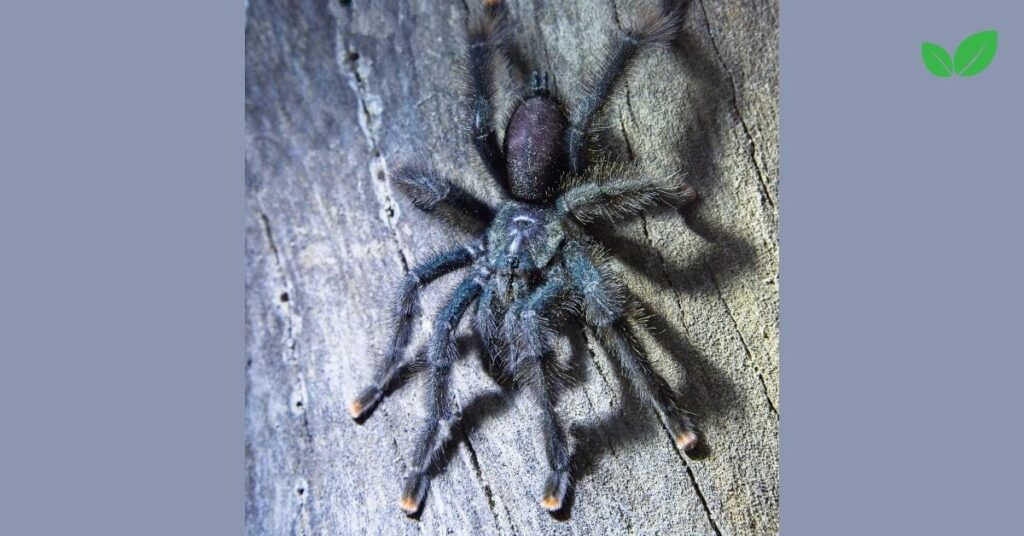
Habitat Loss
One of the most significant threats to Psalmopoeus irminia is habitat loss due to deforestation and human encroachment. The tropical rainforests of Venezuela are under pressure from logging, agriculture, and urban development, which reduce the availability of suitable habitats for this and many other species.
Collection for the Pet Trade
The exotic pet trade poses another challenge to the conservation of P. irminia. While captive breeding programs exist, wild populations are still vulnerable to collection. This practice not only depletes natural populations but also disrupts the ecological balance by removing an important predator from the environment.
Climate Change
Climate change adds another layer of complexity to the conservation of Psalmopoeus irminia. Shifts in temperature and humidity patterns can alter the delicate balance of the tropical rainforest ecosystem. Increased temperatures and changes in rainfall can directly impact the tarantula’s habitat, affecting prey availability, breeding cycles, and overall survivability. These environmental changes could force P. irminia to adapt rapidly or face population declines.
Conservation Efforts
Conservation strategies for Psalmopoeus irminia should include habitat preservation and stricter enforcement of wildlife protection laws to prevent illegal collection. Promoting responsible captive breeding programs can reduce the pressure on wild populations by providing enthusiasts with sustainable alternatives.
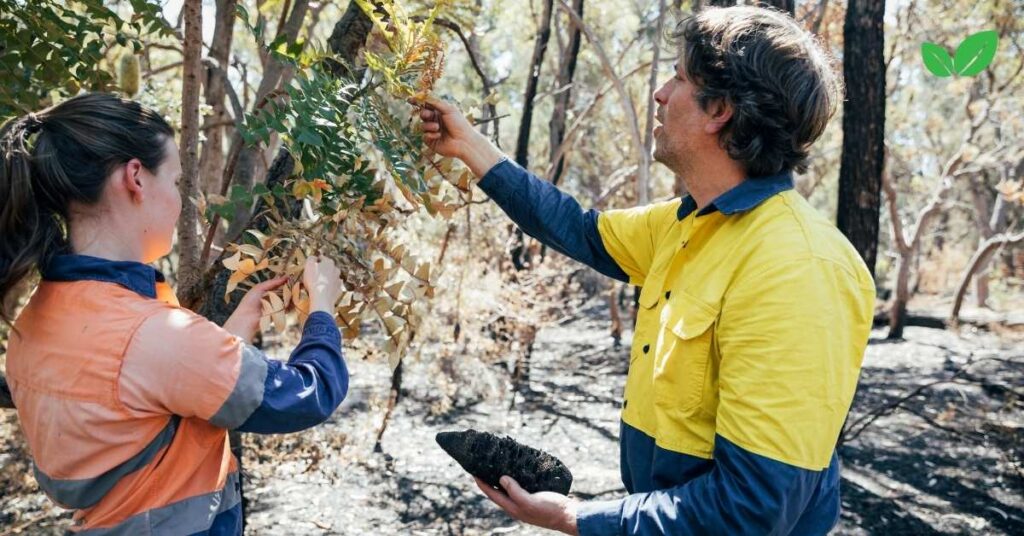
Conclusion
Psalmopoeus irminia, the Venezuelan Suntiger Tarantula, is more than just a visually striking arachnid—it is a vital component of its ecosystem. Its adaptations, including its arboreal lifestyle, defensive behaviors, and specialized hunting strategies, underscore its resilience and ecological importance in the tropical rainforests of Venezuela and surrounding regions. Despite its evolutionary advantages, Psalmopoeus irminia faces significant challenges from habitat loss, climate change, and the exotic pet trade.
The continued survival of this species hinges on comprehensive conservation efforts that prioritize habitat preservation and responsible pet trade practices. Collaborative efforts between international conservation bodies and local governments are essential to enforce protective measures and mitigate threats. By fostering awareness and supporting sustainable practices, we can help ensure that Psalmopoeus irminia continues to thrive in its natural habitat, maintaining its role as both predator and prey and contributing to the health and balance of the tropical ecosystem.
Protecting P. irminia and similar species represents a broader commitment to preserving biodiversity and the intricate web of life that sustains tropical rainforests. As stewards of the planet, it is our responsibility to safeguard these complex ecosystems for future generations.
Read More: Chromatopelma Cyaneopubescens: Unraveling the Environmental Niche of the Greenbottle Blue Tarantula

